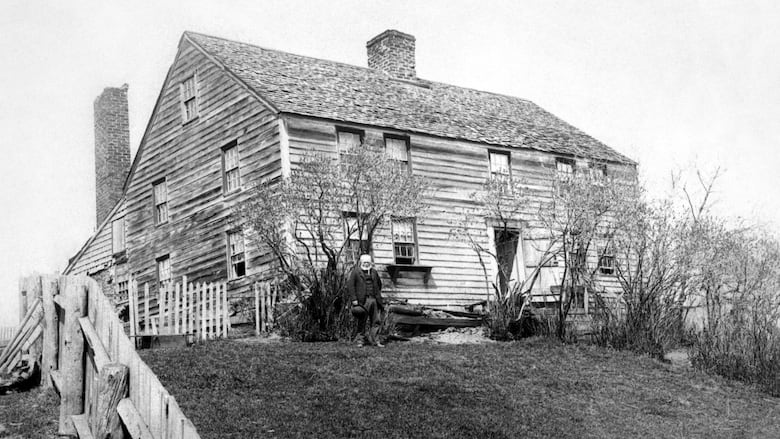200th anniversary of Great Miramichi Fire inspires summer series at historical house
Bathurst's connection to devastating 1825 fire will be explored in events put on at heritage building

Two hundred years ago, in October, a massive forest fire raged across 16,000 square kilometres of New Brunswick in a tragedy that became known as the Great Miramichi Fire of 1825.
The fire destroyed much of Newcastle and Douglastown and jumped the Miramichi River to Chatham Head, destroying the villages of Bushville, Napan and Black River.
Officially, the fire claimed 160 lives, but history professor Alan MacEachern of Western University says that number is likely low.
"It became the official number very early, and they kept finding corpses afterwards," MacEachern said in an interview. "There were also thousands of lumbermen in the woods at that point."
MacEachern, who wrote the book The Miramichi Fire: A History, said that because many people lost their homes, they had to move away. And some, he said, likely wrongfully assumed the fire meant the death of Miramichi's forest industry.

"The fire basically meant that some people moved further north in New Brunswick, some moved to Gaspé and Quebec, I mean, even up into the Ottawa Valley," MacEachern said.
"You could say that the Miramichi fire kick-started the forest industry in the Ottawa Valley, to the point that, if you go to Pembroke, Ontario, now, two centuries later, the long-term care facility is called the Miramichi Lodge."
Some people moved to the Bathurst region, and this detail is the motivation behind a summer of events at the Maison Doucet Hennessy House exploring the Bathurst connection to the Great Miramichi Fire.
MacEachern will give a presentation in August as part of the program, but the rest of the events begin on Thursday at the provincial heritage building overlooking the Bay of Chaleur.
Melynda Jarratt, the president of the Maison Doucet Hennessy House, built more than 210 years ago, said she had two inspirations for program.
Her ancestors were directly affected by the fire, which broke out just after they arrived from Ireland.
And the Doucet Hennessy House came into possession of doors from the O'Brien House, built after the fire and associated with Joseph Cunard, an influential shipbuilder who came to Bathurst in the early 1830s and built several homes to house his employees.
"The O'Brien House was the very last of a … small, purpose-built community by Joseph Cunard when he came up to Bathurst after the fire to continue his shipbuilding enterprise, which had been decimated due to the fires," Jarratt said.
One of the doors will soon be the front door of the Maison Doucet Hennessy House, which Jarratt said was just an obvious connection to the fire.

The summer programming has three different aspects — theatre, music and history.
MacEachern will be part of the history portion.
Mary Anne Riordon Barry, from the northeast community of Pokeshaw, will also take part, with a presentation of oral history she gathered from people whose ancestors had to move after the fire.
"I really had to do my own time connecting with people who were up here because I don't think that the people in Miramichi really know who and where the diaspora of people went to after the fire," said Riordon Barry.
A lot of names she found settled in the former village of Jacquet River, which has since amalgamated with Belledune.
Riordon Barry will give her presentations this weekend.

But along with history presentations, Jarratt said the events also include weekly performances of a play by Character Matters Miramichi, which features portrayals of Joseph Cunard and Charles Doucet, who Jarratt said built Maison Doucet Hennessy House.
The house's artist-in-residence, David Scott, will also perform his own clarinet compositions inspired by the Miramichi fire.
Scott said while his presentation uses the historical narrative of the fire as a reference, for him, the music is more about "the impact that has led to a metamorphosis of a displaced community."
"I'm kind of imagining the symbolism of the phoenix — so this idea of the immortal firebird of mythology that is said to be reborn from the ashes of its predecessor," Scott said.

"The fire didn't just destroy everything, and that was the end of the story. So while … it was a significant tragedy, I really think of it as a story of resilience of the people of New Brunswick."
Scott said he only started learning about the fire when he started this project, so he hopes that people will be able to enjoy the music and potentially learn something about themselves, the community or the history in general.
Jarratt has the same goal.
"If I get people walking away from these events saying, 'I did not know that,' that means more to me than anything else," she said.


